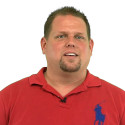Podcast: Play in new window | Embed
This week in 1877 – Thomas Edison wrote a letter to the president of the Telegraph Company in Pittsburgh, PA. The letter stated his feelings that the word, “hello” would be a more appropriate greeting when answering the phone, than “ahoy,” which was suggested by Alexander Graham Bell.
1915 – Charles Kettering of Dayton, Ohio patented the electric, automobile self-starter. In the early years of the automobile, drivers used iron hand cranks to start the internal combustion process that powered the engines on their cars. If the driver forgot to turn his ignition off before turning the crank, the car could backfire or roll forward, as at the time most vehicles had no brakes. Clearly a better system was needed, and in 1911 Cadillac head Henry M. Leland gave Charles Kettering the task of developing one.
1964 – Syncom 3, the first geostationary communication satellite, was launched. This satellite had the addition of a wideband channel for television and was used to telecast, among other things, the 1964 Summer Olympics in Tokyo, back to the United States
1985 – The machine that revolutionized the world’s offices, the original Xerox 914 copier, took its place among the honored machines of other eras at the Smithsonian Institution’s National Museum of American History. The document copier had been formally introduced to the world in March of 1960. In just twenty-five years, the machine, invented by Chester Carlson, a patent lawyer, had become obsolete enough to make it into the museum.
And this week in 1982 – The first Compact Discs were released to the public in Hanover, Germany. One thing we remember about CDs was their ability to hold 74 minutes of music. Why 74? According to many reports, the wife of Sony’s vice president decided that she wanted Beethoven’s Ninth Symphony to fit on a CD. The longest known recording of that performance was, you guessed it… 74 minutes.


